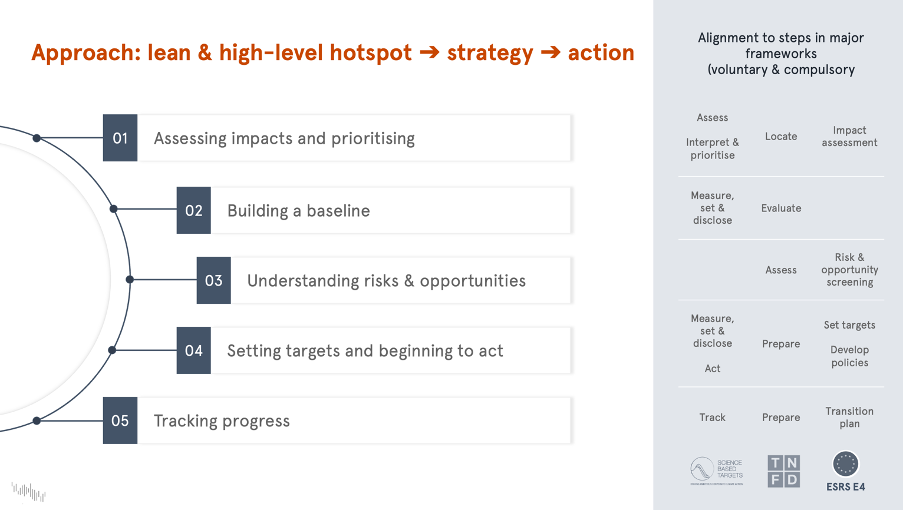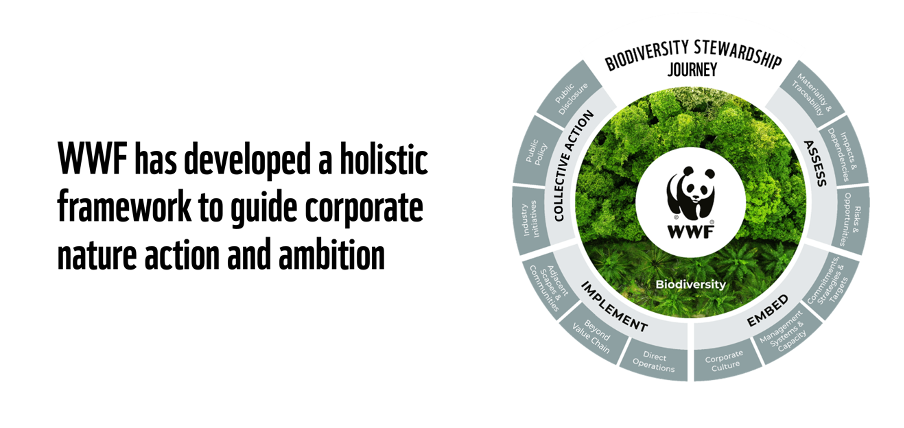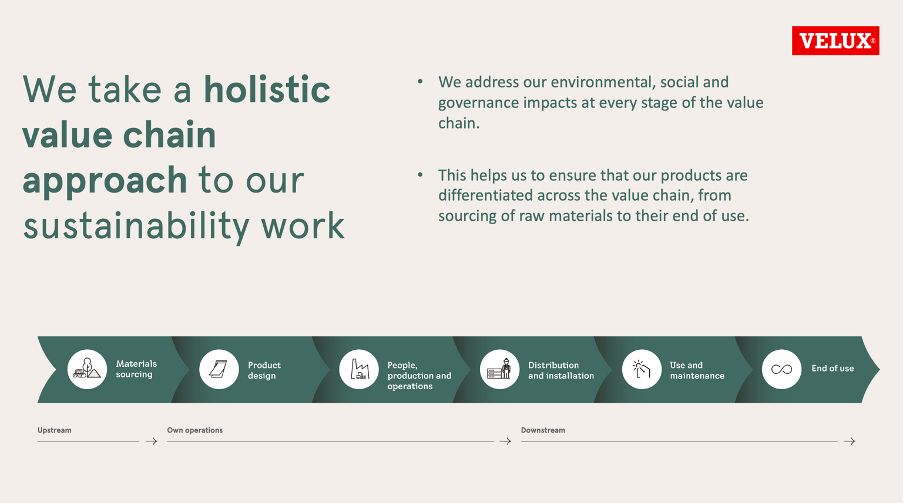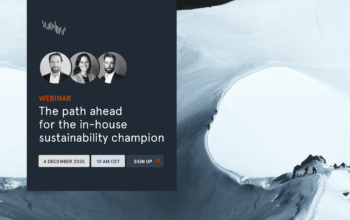On April 24th, 2025, experts Katharina von Bieberstein, Sustainability Partner at VELUX, Luise Jochimsen, Senior Biodiversity Stewardship Specialist at WWF Denmark, and David Færgeman, Biodiversity Lead at Nordic Sustainability, came together for a discussion on the corporate biodiversity strategy in action.
With ecosystems under pressure and nearly half of insect species in decline, businesses face a stark choice: become part of the solution or perpetuate the crisis. The session underscored how nature risk is business risk, but also a strategic opportunity.
Addressing biodiversity risks: a strategic approach
David Færgeman opened the session with an overview of the state-of-nature. Over 50% of global GDP is moderately or highly dependent on nature, from stable agricultural yields to clean water supplies. Yet biodiversity loss is accelerating.
For companies, biodiversity presents both challenges and opportunities. While limitations such as insufficient data, internal capacity and resources can pose obstacles, they should not overshadow the potential gains—greater resilience, reduced risk, improved resource efficiency, and new market opportunities.
To support companies on this journey, Nordic Sustainability has developed a lean five-step approach aligned with the TNFD, SBTi, and ESRS E4 frameworks:

Importantly, David encouraged action before full data maturity, especially for companies with limited visibility into their supply chains. Efforts to improve data can run in parallel. In the meantime, steps like reducing resource use and rethinking product design are practical and impactful starting points.
What should companies do?
Luise Jochimsen introduced WWF’s corporate stewardship framework, which helps companies take structured action through strategic tools, on-the-ground projects and collective efforts.
Starter tools to assess the organisation’s risks and dependencies
If you’re unsure where to start, here are some available tools to help you understand your organisation’s biodiversity footprint and identify areas of risk and opportunity:
- BRF Inform Module (to screen for industry-specific biodiversity impacts and dependencies)
- BRF/WRF Explore Module (to identify high-risk geographies in your value chains)
- Materiality Screening Tool
- High-impact commodity list (to cross-check if you are sourcing commodities driving biodiversity loss)
Implementation of nature projects within and beyond the value chain
To drive meaningful impact, WWF partners with companies to implement nature conservation projects in high-biodiversity value regions, adjacent to value chains and beyond. Examples include wetland restoration projects with Carlsberg in the Mekong and Yangtze River basins, addressing water risk further downstream in Carlsberg production sites.
Mobilisation of collective action and knowledge sharing
Achieving ambitious biodiversity targets often requires collaboration across stakeholders and regions, as well as between different actors along the value chain. An example from WWF is their collaboration with IKEA, where they helped create the Better Cotton Initiative, bringing together farmers, producers, and retailers to apply more sustainable cotton production techniques. More than 45,000 farmers in India and Pakistan have been trained under the partnership to date.
Luise stressed the importance of focusing on high-risk geographies and material priorities. She also encouraged companies to move past the “analysis paralysis” by starting where they can and building momentum from there.
Biodiversity strategy in practice
Katharina introduced VELUX’s 2020 sustainability strategy and how it was integrated in the company strategy as a common goal in 2023. Within the theme of ‘climate and nature,’ a new strategic project was launched to strengthen biodiversity efforts. The company adopts a holistic, value chain approach, addressing impacts at every stage of the supply chain.

Existing actions to address the biodiversity crisis include sourcing materials with increased recycled content and broader circularity efforts. A partnership with WWF focuses on reducing and removing CO2 equivalent to historic emissions (Scope 1 and 2) from the foundation until 2041—the 100th anniversary. The forest projects aim to improve biodiversity and support local communities.
The purpose of the dedicated biodiversity project is to protect, improve and restore natural ecosystems and essential ecological processes and to preserve biodiversity by reducing the VELUX Group’s and its suppliers’ negative impact on biodiversity.
Key actions under the strategy project include:
- Improving biodiversity on VELUX sites: Global green spaces are being improved, with a company-wide playbook for site-level biodiversity assessments and action planning, piloted across six countries. The first roll-out of the playbook at new sites is set for 2025.
- Biodiversity mappings: In 2024, a high-level analysis of VELUX’s impact on biodiversity will inform the biodiversity mappings of key materials in the supply chain. This will contribute to the development of a roadmap and action plan leading to 2030.
Biodiversity reporting affected by Omnibus?
The panel also addressed the impact of the delayed CSRD timelines. While biodiversity disclosures may see reduced pressure in updated EU reporting standards, the speakers agreed this should not stall corporate action.
Biodiversity’s material risks and stakeholder expectations remain unchanged. Financial institutions, in particular, are expected to continue demanding high-quality data on nature impacts.
Key takeaways
- Act now, even with imperfect data. Delays risk and long-term business viability.
- Make biodiversity visible to leadership by linking it to operational and financial outcomes.
- Use freely available tools to identify high-impact materials and locations.
- Invest in site-level action to drive engagement and measurable change.

Interested in learning more about biodiversity?
Discover how your organisation can cultivate business resilience through strategic biodiversity action.




